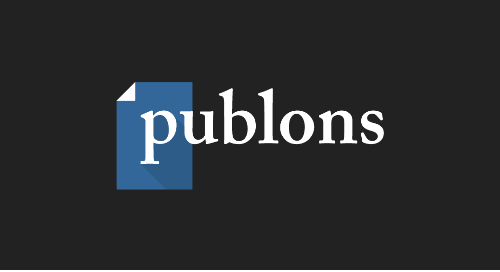thevalueofopenresearchpublishing-yourquestionsanswered
June 20, 2022
In a recent Wiley Editor Seminar for editors of open access journals, we discussed the key role of sound science journals in making sure no valuable research goes unshared, providing exceptional author service, and helping solve global challenges. Our speakers, Sam Rose (Director of Journal Management, Hindawi), Kaia Motter (Senior Manager, Open Access Policy, Wiley), and Dr. Charles Young (Editor-in-Chief), discussed the value of scientifically sound research and our sound science publishing philosophy and its impact on publishing practices. Dr. Young shared more on the mission of his three sound science journals in improving healthcare and influencing clinical practice, how the open access research published in those journals benefit patients around the globe, and how being part of a journal transfer network has contributed to the success of his journals.
This blog post covers all questions asked by our editor audience during the webinar about sound science publishing, the role of a journal in a transfer network, and open access policy and waivers. Read below to find answers from our event presenters Sam Rose (SR), Kaia Motter (KM), and Dr. Charles Young (CY). To request the recording link for this webinar, email us at editors@wiley.com.
Sound science publishing
Q. What's the threshold between publishing more and upholding trust in research?
SR: It is really important to remark that all published research, including sound science, goes through a solid peer review process and is therefore validated before publication. As Dr. Young has shared during the webinar while talking about the mission of his journals (Health Science Reports, Clinical Case Reports, and International Journal of Clinical Practice), sound science journals are committed to publishing high-quality research where novelty and uniqueness are not key criteria for consideration. It's not about publishing more, but about making sure that publishable research is not lost, nor submitted to multiple journals, thereby wasting the time of authors, editors and reviewers before it finds the right journal for publication.
Q. Can you elaborate more on what operating a sound science journal looks like in practice?
SR: As for any journals, a most important aspect in operating sound science journals is to ensure that peer review is rigorous, editorial practice standards are high and that editorial independence is preserved. At Hindawi, we’ve experienced that providing training and supportive frameworks enable greater consistency across decision-making editors.
It’s important to set clear guidelines, and consistent messaging on what the journal adheres to, not only for editors, but also for authors and reviewers as sound science journals are committed to offer a fair service that is transparent to all stakeholders. While implementing a sound science publishing philosophy across all our portfolio, we’ve realized that editor behavior may be subject to change in time. We therefore suggest conversations around managing a sound science journal be part of an ongoing effort.
Q. What's the difference and the relationship between novelty and high quality in a manuscript?
KM: We expect all publications to meet high standards for quality and research integrity. Publications of novel results may be perceived as higher quality because they often generate a high level of interest in the subject community thereby generating higher usage and citations. However, novel results should not be automatically conflated with high quality.
High quality sound science publications can do just as much to advance science when presented in the right way. There’ll always be a place for highlighting major advances and breakthroughs. However, adopting a mindset wherein it is understood that each output from the research lifecycle can be high quality and add value will move us away from an exclusive focus on novel results as the only high-quality output from the research lifecycle.
Q. How can we make sure that reviewers do not reject manuscripts submitted to sound science journals on the ground of a lack of novelty?
KM: This is an important point for editors to consider, especially when using the same reviewer pool to review for a selective journal as well as a sound science journal. There are several ways to educate reviewers about the journal’s selection criteria in advance so that editors don’t have to override the reviewer’s recommendations which will ultimately undermine the peer review process.
Being clear about the journal’s aims and scope, acceptable article types, acceptance criteria for negative or null results and the review of preliminary results, and providing clear guidelines, including checklists, can help eliminate inconsistency and conflicting standards for review and acceptance. You can speak to your journal manager if you’d like to develop educational materials and guidelines for reviewers.
Q. In your view, how much should the journal readership and their interest factor in when considering whether to accept a manuscript in a sound science journal?
CY: I think this is a key consideration and applicable to all journals, irrespective of their sound science approach. Publishing articles which have immediate interest and relevance to the readership is a priority for all high-quality journals.
Q. As an Editor-in-Chief you might have had different opinions on a manuscript to that of a handling editor. Do you have any advice on how to manage and resolve similar situations?
CY: My advice is to look for consensus when this is possible but to have clear acceptance / rejection criteria to make this type of discussion easier. In the end the key here is excellent communication between the members of the editorial team.
Q. There are sometimes manuscripts that, following peer-review, need undergo significant revisions before they can be considered further. For such cases, the decision is often borderline – rejection or major revision. Is there an editorial best practice that in your view a journal should discuss and establish?
CY: In my view major revision is often the best approach; it shows the journal still has an interest in the data / message presented and allows the editorial team to continue work with the authors to improve their work to a sufficient standard.
Q. Charles, you mentioned that the pandemic contributed to submission growth in your journals. Could you elaborate more on this aspect? Were there other factors that contributed to increasing submissions?
CY: The COVID-19 pandemic, and research about COVID-19, had a direct impact on the number of submissions to my journals. However, in my view, the last two years contributed to raising awareness on the importance of clinical research in general, not just around COVID-19. As a consequence, all my three journals publishing clinically focused research experienced an increase in number of submissions not only about COVID-19 but also about research on other medical conditions.
Q. How did you cope with an increased workload as the number of submissions in your journals grew?
CY: One of the key aspects in my role as an editor is ensuring that editorial processes are efficient. When editorial processes lack efficiency, there may be a risk of missing to publish an important piece of research, or of publishing research that should have not been published. Efficient editorial processes proved instrumental over the last few years to manage the increase in submission volume and the associated increase in workload.
It's also important to acknowledge that managing a journal is a teamwork. As Editor-in-Chief I’m supported by Wiley and by the journals’ editorial teams encompassing clinicians all around the globe. We work together to help publish research that benefits practicing clinicians.
Q. How do DORA principles play into the sound science framework?
KM: DORA, the San Francisco Declaration on Research Assessment, encompasses a number of principles for responsible research assessment that are key to maintaining publishing integrity and supporting our diverse community of authors, globally and across all scholarly disciplines. One of the primary goals of DORA is to encourage shifting emphasis away from journal-based metrics, such as the impact factor, toward article-level metrics and individual author contribution for a broader, more equitable view and assessment of research impact.
Sound science aligns with DORA principles. In fact, the more opportunities authors have to publish outputs from their research, the more opportunities we provide for them to gain recognition and reward for the research they've conducted which helps them advance in their careers. Sound science journals publish research on common but important issues, with a focus on quality rather than perceived novelty or (citation) impact. Examples of research outputs include replication studies, incremental results, datasets, and case studies, as well as confirmatory research and negative results. At the core of sound science publishing philosophy is the collective mission of finding a home for every paper that is scientifically valid, technically accurate, as reproducible as possible and ethically sound, and to deliver rapid decisions to authors, supporting researchers in their career advancement.
The role of a journal in a transfer network
Q. Can you speak to how you develop productive relationships with your supporter journals?
CY: Participating in a journal transfer network is not just about being part of an automated or mechanical process. It’s also about building and maintaining a relationship between journals. These relationships help me understand the approach of journals referring manuscripts to my journals and communicate what I look for in manuscripts referred to my journals. Exchange of information and feedback is important to make the transfer process work smoothly, to help authors find the right journal for their paper and publish their work as soon as possible. Building such relationships adds a personal touch and a little fun to my job as an editor and helps me learn a lot from other editors too.
Q: How much choice do authors have when receiving a suggestion to transfer their paper?
KM: If a manuscript is not accepted in your journal, as an editor you can refer authors to a journal that you think would be more suitable for their paper through the Editor-Driven Referral (EDR) workflow. Referral suggestions are selected from a list of curated journals with overlapping scope. Which and how many titles depend on where the title is networked and what you as an editor feel makes the most sense for your journal. EDR typically includes 2 to 5 journal choices. Journals that our Transfer Desk Assistant (TDA) suggests are instead based on machine-learning and may include up to 8 good matches.
A referral is as simple as that – a suggestion. Authors are in control, as transferring is completely optional: they can decide whether to accept or not the invitation to transfer their manuscript (including peer review reports when available, and all other submission files), choose the journal they want to resubmit to, and have the option to revise their manuscript and cover letter before completing the submission. Once the transfer of files is complete, the transferred manuscript undertakes a further editorial evaluation at the receiver journal.
One of the main benefits of Refer & Transfer is to help authors find the right journal for their paper and get published quicker. Transfer offers allow authors to resubmit with ease to a suitable alternative Wiley or Hindawi journal. When reviewer reports are transferred with the manuscript, the new journal’s editor can consider those reports and use them in their own evaluation, making the most of reviewers’ effort and valuing the time they’ve invested to evaluate a paper.
CY: I think it’s also important we realize that when authors receive a rejection letter, this may feel like their article, which is typically the result of years worth of research, is not publishable at all. From an author’s perspective, receiving a referral can make a significant difference: not only it can take the burden of finding a new journal away from the authors, but it also emphasizes that their manuscript may not be a good fit for the journal they’ve originally submitted it to, but it could be right for another one. This is a more positive message to send to authors and allows us to better support researchers and advance the collective knowledge, making sure that no research is lost or never published.
Q. Why do you think editor driven referrals are accepted at higher rates than direct submissions at Health Science Reports?
CY: I think it comes back to having clear communication with editors of journals within the same transfer network and make sure there is a clear understanding on what I look for in transferred manuscripts. Exchange of information is key to offering good transfer options to authors. I believe that curating our network and referral choices help provide authors with a set of alternative journals where they have a greater chance to publish their research. And this ultimately reflects in higher acceptance rates for editor driven transfers than for direct submissions. This clearly sets a challenge for me as the editor and for the editorial team at large, as lower acceptance rate of direct submissions may also suggest that we need to do more to inform authors about what we want to publish in our journal and what isn't the right fit.
Q. What is the biggest challenge to build up a successful journal transfer network between Wiley and Hindawi?
SR: A challenge is to ensure content is referred for the right reasons and to the right journal. Hindawi recently implemented reasons for rejection, where editors can mark a manuscript as out of scope, which will automatically transfer the article to a more suitable journal.
Wiley and Hindawi are working to provide authors with more opportunities to submit and/or transfer their manuscript. We want authors to feel comfortable with our joint referral network and become familiar with it.
Open access policy and waivers
Q. Which options can journals offer to authors looking to publish their dissertations or theses? Do waivers apply for theses submitted for instance from Low- and Middle-Income Countries (LMICs)?
KM: There are a number of publication options for trainees, but authors should think carefully about which publication venue will best support their work.
If the work is a dissertation that has been through institutional review and defense, then preprinting this work would be the best way to gain exposure, without having to pay a publication fee. But this option does not include formal peer review. ProQuest is another publication option for dissertations and the publication fee is often lower than a standard journal publication fee.
Journal publication can be an option provided the author is willing to re-work the dissertation to conform with the journal’s article format requirements or to adapt a part of the dissertation to align with the journal’s aims and scope.
While there is no fee to publish in a hybrid journal, open access publication will achieve unlimited and unrestricted access and opportunities for re-use as well as author copyright retention. However, publication in a hybrid journal may also help the author reach an important target audience or subject community.
Q. As the number of submissions to journals increases, finding reviewers is becoming more challenging. Are there plans to incentivize reviewers’ participation, such as offering APC (Article Publication Charge) vouchers, and make sure their role and contribution to the publication process are acknowledged?
KM: There are no immediate plans to offer an APC discount for reviewers, but we are actively looking at open access business models that may mitigate the issue of APC equity for authors in LMICs who do not qualify for the Research4Life waiver and discount program.
We currently have several ways to recognize reviewers, for instance through our collaborations with Publons and ORCiD. On Publons reviewers can track, verify, and showcase their review work and expertise without compromising anonymity. Reviewers should sign up to Publons, so when they complete their reviews, these can be instantly added to their profile in full compliance with journal review policies. Reviewers can also opt-in to have Publons automatically export their review history to their ORCiD profile.
When reviewing for a selection of Wiley journals in the health sciences, reviewers can claim Continuing Medical Education (CME) credits for their activity. Moreover, over 800 Wiley journals issue a Reviewer Recognition Certificate. Read out more about how we recognize reviewers for their contribution here.
Q. You mentioned that sound science journals serve a diverse author community and support early career researchers. Authors are, however, asked to pay a publication fee. What type of support is offered to authors who do not have access to funding?
KM: While this is part of an ongoing discussion and we're still actively looking for solutions, there are a number of ways we are currently supporting authors without access to publishing funds:
1) Our partnership with Research4Life enables research from authors from low- and middle-income countries to be published open access by providing automatic waivers and discounts on APCs for authors accepted to publish in our gold open access journals.
2) Both Wiley and Hindawi offer discounts and waiver initiatives for APCs – find out more about Wiley waivers here, and about Hindawi APC waiver policy here.
3) In recent years, we’ve signed a number of transformational agreements (TAs) that allow authors at eligible institutions to publish their research OA in any hybrid journals at no cost to them. Several of these agreements also enable publishing in any of our gold OA titles. Transitional agreements are a way to create parity towards OA for all fields of research – not just those that traditionally offered APC funding. As a consequence, we've seen a huge increase in the number of OA publications for example in the social sciences and humanities.
Read more about what TAs are, and find out where Wiley’s TAs are.
4) There are also models that support or subsidize the costs of open access publishing, such as the diamond OA model, the Subscribe to Open (S2O) model and others. Wiley has a small number of diamond OA journals, where APCs are covered by a separate entity such as a society not-for-profit, or other sponsoring organizations thus supporting individual authors who do not have access to funds for APCs.
Further reading:
8 Reasons Why Sound Science is Crucial in an Open Access World
Endorsing DORA for Responsible Research Assessment
Transformational Agreements: An Introduction for Editors, 2022 Update
Enabling Open Access Through Transformational Agreements
How does Refer and Transfer Help Your Authors?
Wiley Acquires Hindawi: A Q&A with Liz Ferguson









